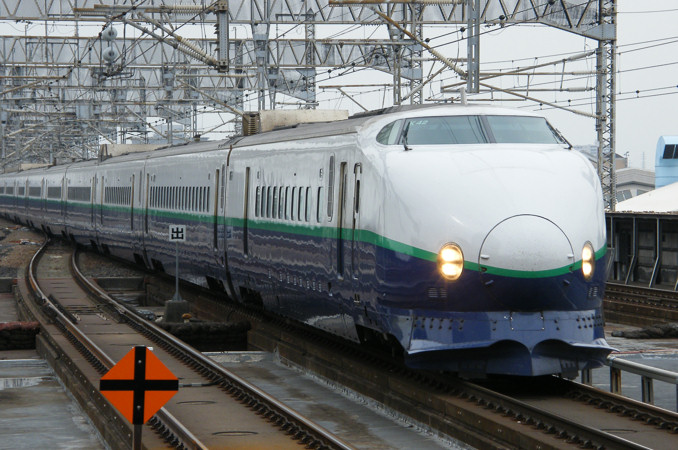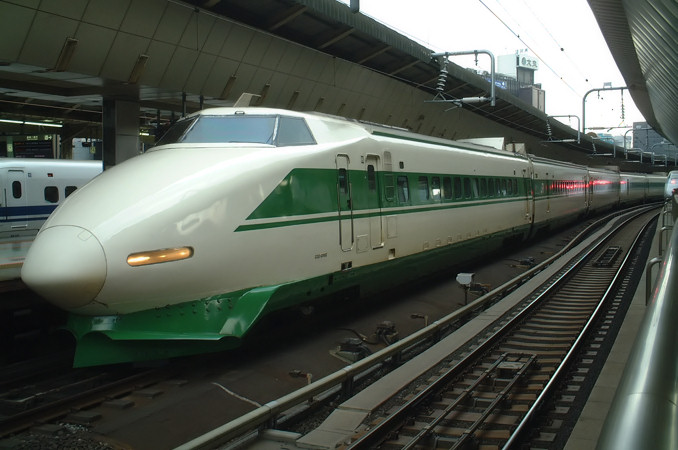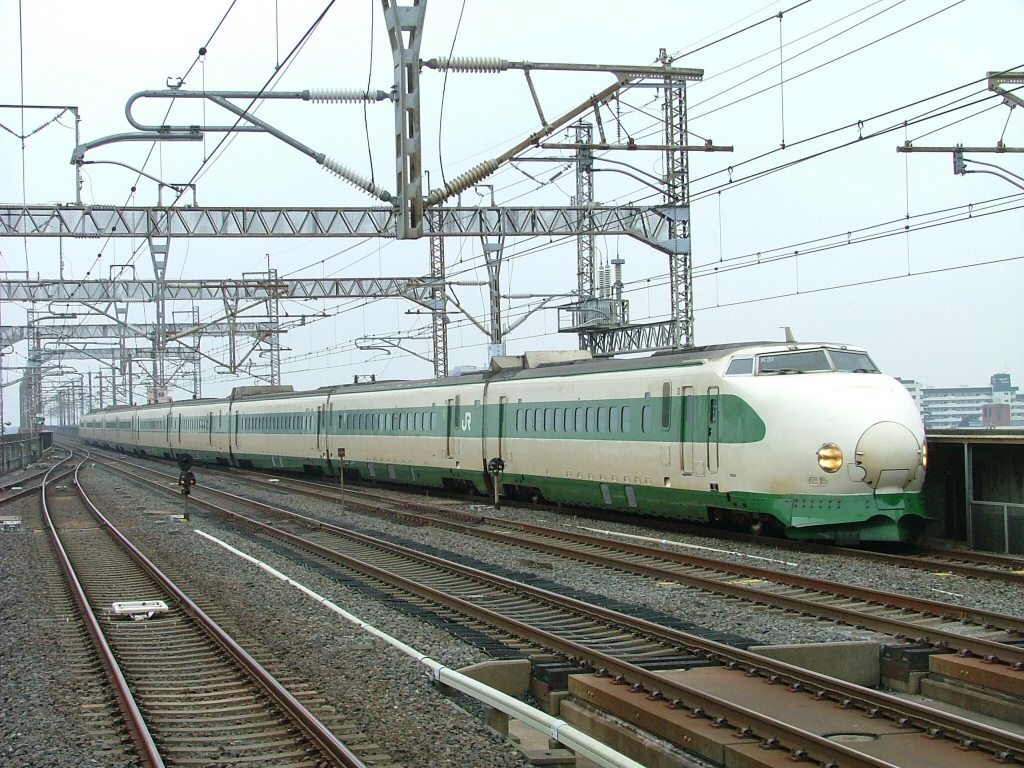|
An updated Series 200 (Courtesy of uraken.net)
A shark-nose 200 Series (Courtesy of uraken.net)
An original 200 Series (Courtesy of uraken.net)
|
JNR 200 Series Retired from regular service
In Service: 1982 - Present Top Speed: 275km/h (Service) Length: 25150 mm (End cars) 25000 mm (Middle cars) Width: 3380mm Consist/Formation: 8 motorized cars (8 cars) 10 motorized cars (10 cars) 12 motorized cars (12 cars) 12 motorized cars + 1 trailer car (13cars) 14 motorized cars + 2 trailer cars (16 cars) Electric System: 25000v 50hz AC through overhead wires Gauge: 1435mm (Standard) Number built: 700 cars The 200 Series is a Shinkansen-type electric multiple unit developed by the Japanese National Railways (JNR) to become the first Shinkansen to run on its new Tohoku Shinkansen line in 1982. Though similar in appearance to the 0 Series used on the Tokaido Shinkansen, the 200 Series is immediately distinguishable by its large snow plow on the front and green stripe on the side. One of its distinct features is its body design. All equipment such as the motors and compressors underneath the train are sealed inside the cowling to protect them from the snow. Special air intakes that separate the snow from the air to prevent mechanical trouble are another distinct design feature. With the introduction of the sharp new 100 Series to the Tokaido Shinkansen in 1984, a new front car nicknamed the "Shark-Nose" was built for the 200 Series. While the 200 Series served as the symbol of the Tohoku Shinkansen even after the fall of the JNR, they were quickly replaced by new JR designs in the mid 90's. A few were given some updates and a new paint scheme but with the introduction of the E5 Series, they have been taken out of regular service permanently. Did you know? A 200 Series end car in original colors is preserved at the Railway Museum in Saitama City. |




